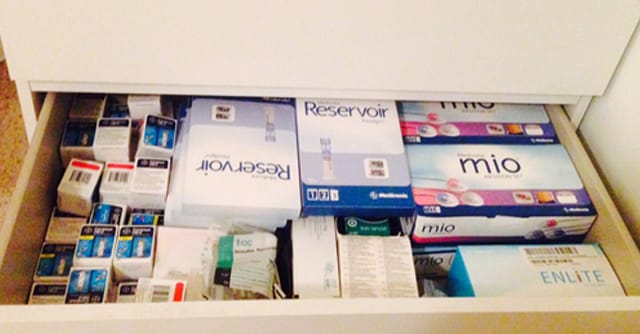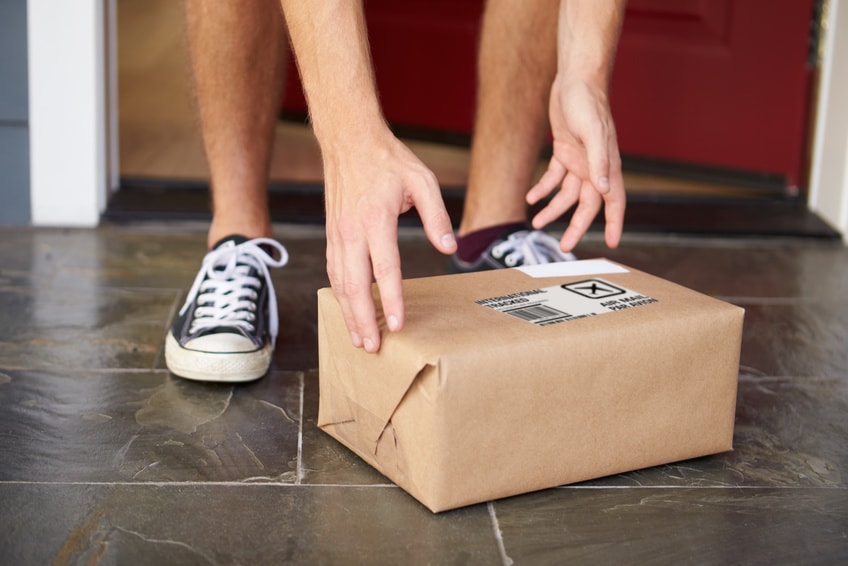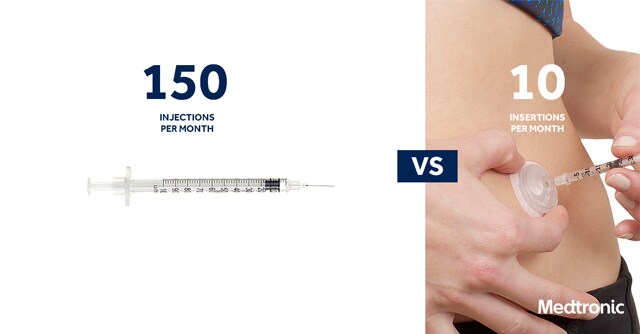4 tips for organizing your diabetes supplies

Has this ever happened to you? You think you have a couple of reservoirs left in your drawer, it's a long holiday weekend, and before you know it, it's time to change out your infusion set and reservoir. You look in your drawer and find that you don't have any left. Have you ever been here before? I know I have. With spring here and all of the "spring cleaning" you might be doing, consider adding your diabetes supplies to the list of household items that need some organization.
1. Take inventory
Start by making an inventory list of your diabetes supplies. This would consist of items you use all the time, such as test strips, infusion sets, reservoirs, and insulin. Be sure to include essential items that are absolutely necessary, but sometimes go unaccounted for, such as batteries for your pump, test strips, lancets, tape, glucose tablets, and syringes for manual injections (just in case). Take your list, laminate it, and place this next to your supplies. This way you can check off your essentials and not forget crucial items.
2. Dedicate a space
Now that you have your list, dedicate a place in your home to keep only your diabetes supplies. This area will be your one-stop shop for all your needs. I've used different spaces in my house and now have everything in three drawers in my bedroom, with medication like insulin stored in the fridge. I know that some people also use their kitchen and dedicate a section of their pantry, cabinets, or kitchen drawers for their supplies. You might even want to invest in dividers for your drawers or put labels on clear plastic bins. Which ever area you choose, keep your infusion sets, reservoirs, glucagon, and batteries all in one visible area. By keeping them in one place, you can easily tell what you're running low on or might have too much of.
3. Set on-going reminders
Set up monthly or bi-weekly reminders to take inventory of your supplies, replenish your stock (infusion sets, reservoirs, insulin, batteries, test strips, and glucose tablets), and make sure you have all the necessary diabetes supplies you need. If you're the type that does not want to think about reordering supplies every month, you can also automate your monthly supply delivery by signing up for auto reordering. This is what I use and it is so easy. I haven't run out of supplies since I signed up for the program because I don't have to remember to reorder. You could also set monthly reminders to reorder your supplies or pharmacy items so you never come short. If you have an alarm on your phone, this is a great and easy way to set up and maintain your alerts.
4. Always be prepared
Always be prepared for an emergency with a back up plan of syringes for manual injections and one or two sets of infusion sets, reservoirs, and extra tape. Keep one of the supply bags at school or work, and the other at home. If you pull from your back-up supply, don't forget to replenish it.
Set yourself up for success by getting orgainzed this spring. I know that it's hard enough managing diabetes along with a busy lifestyle, so setting aside a weekend of cleaning and organizing will be well worth it in the end. Not only will you declutter some areas in your home, but you'll be less stressed knowing that you can find the right things, at the right time, in the right places, and won't have to worry about desperately seeking emergency supplies last minute.



